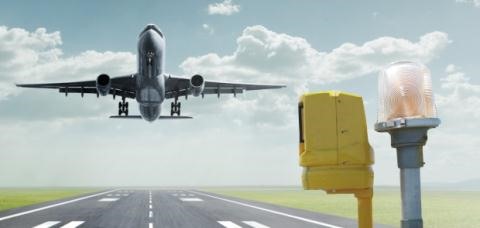 Economy
Economy

The Civil Aviation Authority of Vietnam (CAAV) has asked the Ministry of Transport to approve its purchase of a runway debris detection system to scan for debris and alert airport operators.
 |
| The Civil Aviation Authority of Vietnam (CAAV) has asked the Ministry of Transport to approve its purchase of a runway debris detection system to scan for debris and alert airport operators.— Photo baodatviet.vn |
HÀ NỘI — The Civil Aviation Authority of Vietnam (CAAV) has asked the Ministry of Transport to approve its purchase of a runway debris detection system to scan for debris and alert airport operators.
The system would detect Foreign Object Debris (FOD) on runways if installed at Tân Sơn Nhất and Nội Bài international airports.
FOD is any object that is not supposed to be on a runway. It can range from wildlife to aircraft parts to litter.
The proposal seeks to reduce the number of FOD problems threatening the safety of flights. The systems are expected to cost nearly VNĐ1 trillion, including VNĐ486 billion (US$21.67 million) for Nội Bài Airport and nearly VNĐ510 billion for Tân Sơn Nhất Airport.
According to CAAV statistics, the tyres on 19 planes were slashed by foreign objects on runways, and 20 others planes ran into birds, since early this year. In particular, when planes are landing or taking off at high-speed, if they strike any objects, even those as tiny as screws, a bar of iron, debris or birds, it can become extremely dangerous and even cause accidents.
CAAV said that the runway safety system at the country’s airports currently involved inspecting and examining runways with the naked eye, which was very time-consuming and not performed regularly. Whenever airport workers conduct inspections, they have to close runways, causing delays and difficulties for operations at the airports, especially those that are very busy, such as Nội Bài, Tân Sơn Nhất and Đà Nẵng.
“The automatic runway FOD detection system at the two major airports will provide accurate debris detection. It never issues an incorrect warning and does not cause backups or affects other technology systems at the airfields or aboard planes,” said a CAAV representative.
The CAAV proposed three investment methods.
In the first, the State would directly invest in the project with funds from the State budget. However, the CAAV said this method was unrealistic because of limited budgets.
As for the second method, the project would be invested by the Airports Corporation of Việt Nam. This method has many advantages, such as capital resources and a short implementation process, meeting the urgent demand, ensuring co-ordination in building and managing airfield operations, along with assuming the safety of runways and aviation security at the airfield. The profit would be derived from the annual runway service.
Meanwhile, the third method would be carried out under a private-public partnership (PPP). The investor would install the FOD facilities and then transfer it to the airport operators. The operators would deduct an amount of money from their annual revenue in the runway service to pay for the investors.
The CAAV said that there were a number of investors interested in this project when funded through the PPP method.
If the project receives approval from the transport ministry, investors will have seven months, from November to June 2017, to prepare their investment. Meanwhile, construction is scheduled from July-December 2017 and the systems would become operational by 2018. — VNS




